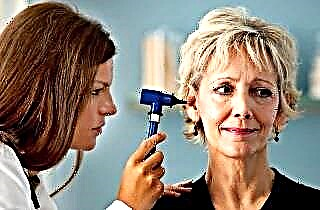Benign neoplasms in the maxillary sinuses are most often the result of a prolonged inflammatory process. These are small elastic bubbles, inside of which liquid accumulates. Most often, cysts are not dangerous to health, but in some cases they can cause serious complications, up to complete cessation of breathing during sleep. To avoid such an outcome, the pathology must be diagnosed in time by a doctor.
Formation mechanism
 The cyst of the maxillary sinus is a consequence of blockage or complete overgrowth of the ducts through which mucus is excreted. Obstruction does not affect the production of secretions, the glands actively produce it. Since the contents have nowhere to go, it begins to accumulate under the mucous membrane. A small cyst forms, which is a kind of reservoir for storing mucus.
The cyst of the maxillary sinus is a consequence of blockage or complete overgrowth of the ducts through which mucus is excreted. Obstruction does not affect the production of secretions, the glands actively produce it. Since the contents have nowhere to go, it begins to accumulate under the mucous membrane. A small cyst forms, which is a kind of reservoir for storing mucus.
Cysts are very "like" to be located in the maxillary sinuses, they can form on the outer and inner walls.
If the bubble size is less than 1 cm, then there is nothing to be afraid of, it does not cause discomfort and does not have a negative effect on the patient's condition.
However, there are also such neoplasms that completely fill the sinus cavity, in such cases, their removal is strongly recommended.
Varieties of neoplasms
A cyst in the maxillary sinus can cause various consequences that negatively affect the patient's well-being and the quality of his life. To avoid possible complications, it is important to determine in time the type of neoplasms, their size and location. Experts distinguish several main types of bubbles:
- Odontogenic. Formed due to the penetration of infections from the teeth into the root canals. Even banal caries can become the reason. Bacteria, penetrating into the area of the bone, destroy its tissues and form voids. To separate healthy cells from infected cells, the body turns on protection, it begins to produce bubbles with liquid, which serve as a kind of barrier.
 Such neoplasms can disappear on their own as soon as the main cause is eliminated - inflammation in the root canal. However, another scenario is also possible. If the cyst is not detected in time, it can gradually increase in size, causing necrosis of bone tissue, it may even happen that the bone disappears altogether. Also, the formation compresses the maxillary sinus, which causes severe pain.
Such neoplasms can disappear on their own as soon as the main cause is eliminated - inflammation in the root canal. However, another scenario is also possible. If the cyst is not detected in time, it can gradually increase in size, causing necrosis of bone tissue, it may even happen that the bone disappears altogether. Also, the formation compresses the maxillary sinus, which causes severe pain.- Retention. This is the name of true cysts, the formation of which is not associated with inflammation of the teeth or gums. They appear due to disruption of the functioning of the ducts that excrete mucus. The location of such neoplasms can be different, most often they are attached to the bottom of the outer walls of the sinuses. Inside them there is a columnar epithelium, which also produces a secret. With an increase in size, the walls of the vesicles become thin, if you do not notice the growth of cystic sacs in time, they can burst, and the infection will get into nearby organs and blood.
- Cyst of the right maxillary sinus. A characteristic feature that the patient may notice is the periodic discharge of mucus from the right nostril. More accurate information about the neoplasm can only be obtained by conducting special laboratory and apparatus studies.
- Cyst of the left maxillary sinus. The situation with this type of cyst is exactly the same as with the previous one. The only difference is that mucus discharge is observed from the left nostril.
How to recognize a disease
The growth of odontogenic cysts is not accompanied by any symptoms at all. The site of the lesion does not hurt, it does not itch, the neoplasm is not palpable on palpation. The same goes for the retention type. It is for this reason that a simple examination of the patient does not give any results; only hardware and laboratory tests are used to make a diagnosis:
- endoscopic examination;
- radiography;
- Magnetic resonance imaging;
- CT scan;
- biopsy.
Additional laboratory tests for nasal mucus may also be ordered.
Bacterial culture helps to identify the presence of a bacterial infection in the focus of the disorder. A general chemical analysis of blood is done to identify concomitant complications in the form of an inflammatory process. Only after an accurate diagnosis has been made, the patient is prescribed therapy or surgery.
Elimination methods
If there is at least one serious complication caused by a cyst of the maxillary sinus, the doctor may decide to perform an operation. An indication for this type of elimination of the problem is also a rapid increase in the size of the neoplasm and the detection of purulent contents in it. The most common methods of surgical intervention are:
 classical resection (access to the neoplasm is provided through healthy tissues, which are damaged during the operation);
classical resection (access to the neoplasm is provided through healthy tissues, which are damaged during the operation);- laser removal (a directed laser beam literally "burns" the cyst, but injury to closely spaced healthy areas of the mucous membrane is possible);
- endoscopic removal (carried out using an endoscope, it displays an image of the inner cavity of the sinuses and the neoplasm itself, microinstruments allow you to remove only the cyst without affecting healthy mucous membranes).
In some cases, the doctor will prescribe medication. This is possible only when the size of the cyst does not exceed 1 cm.Almost all drugs are aimed not at eliminating the neoplasm itself, but at suppressing the symptoms.
Antibiotics may be prescribed to suppress infection, antihistamines to stabilize the allergic background, vasoconstrictor drops, and sprays to relieve swelling.
What if you don't go to the doctor on time?
Those who have found a cyst in the maxillary sinus, but have not been prescribed an operation, should regularly be examined by an ENT specialist and take X-rays, so the doctor can monitor the condition of the neoplasm. If surgical intervention is indicated, then it must be done in any case. If you ignore this, then such serious consequences can arise:
- Deformation of the bones of the skull. The cyst, constantly squeezing the maxillary sinus, over time will begin to press on the bones of the skull, which is fraught with severe persistent headaches.
- Vision problems. An enlarged neoplasm can squeeze the optic nerve, because of this, a person has double vision, vision begins to drop sharply, and its complete loss is possible.
 Chronic inflammation. If the cyst is not removed in time, chronic rhinitis and sinusitis may develop. Constant discharge of mucus from the nose with an admixture of pus is provided for those who do not want to agree to the operation.
Chronic inflammation. If the cyst is not removed in time, chronic rhinitis and sinusitis may develop. Constant discharge of mucus from the nose with an admixture of pus is provided for those who do not want to agree to the operation.- Oxygen starvation. If a person cannot breathe normally through the nose, gas exchange does not occur at the proper level in his alveoli. This means that all cells in the body do not receive enough oxygen. Oxygen starvation is manifested by constant fatigue, decreased brain and physical activity, apathy, decreased concentration and other signs, and it also negatively affects the work of the cardiovascular system.
- Severe headaches. Pain syndrome can have a different location. At the first stages of exacerbation, the patient experiences discomfort only in the area of the affected sinus, but later the head begins to ache completely.
- Spread of infection.If the cyst sac bursts on its own, which happens quite often, then some of its contents will flow out through the nose. The other part will spread to other organs and tissues, causing them to become infected. Even severe intoxication of the whole organism is possible.
Prophylaxis
People who suffer from frequent rhinitis and other infections of the upper respiratory tract should be especially careful and attentive to their health.
The easiest way is to prevent the appearance of cysts, since their further behavior cannot be predicted. Some patients live happily with neoplasms and do not experience any discomfort, while others get a lot of complications.
Preventive measures will help to prevent such an unpleasant phenomenon:
- observance of oral and nasal hygiene;
- timely visit to the dentist and treatment of all dental diseases;
- complete treatment of diseases of the upper respiratory tract;
- strengthening the immune system;
- promptly seeking medical help.
Let's summarize
You should not be afraid of a cyst of the maxillary sinus - this is a benign neoplasm. However, you cannot ignore the violation, if it already exists, then you need to either do an operation or systematically undergo examinations. Negative consequences can only be caused by an irresponsible attitude to one's health, but if the necessary measures are taken in time, then the cysts will not cause any harm to health.

 Such neoplasms can disappear on their own as soon as the main cause is eliminated - inflammation in the root canal. However, another scenario is also possible. If the cyst is not detected in time, it can gradually increase in size, causing necrosis of bone tissue, it may even happen that the bone disappears altogether. Also, the formation compresses the maxillary sinus, which causes severe pain.
Such neoplasms can disappear on their own as soon as the main cause is eliminated - inflammation in the root canal. However, another scenario is also possible. If the cyst is not detected in time, it can gradually increase in size, causing necrosis of bone tissue, it may even happen that the bone disappears altogether. Also, the formation compresses the maxillary sinus, which causes severe pain. classical resection (access to the neoplasm is provided through healthy tissues, which are damaged during the operation);
classical resection (access to the neoplasm is provided through healthy tissues, which are damaged during the operation); Chronic inflammation. If the cyst is not removed in time, chronic rhinitis and sinusitis may develop. Constant discharge of mucus from the nose with an admixture of pus is provided for those who do not want to agree to the operation.
Chronic inflammation. If the cyst is not removed in time, chronic rhinitis and sinusitis may develop. Constant discharge of mucus from the nose with an admixture of pus is provided for those who do not want to agree to the operation.

